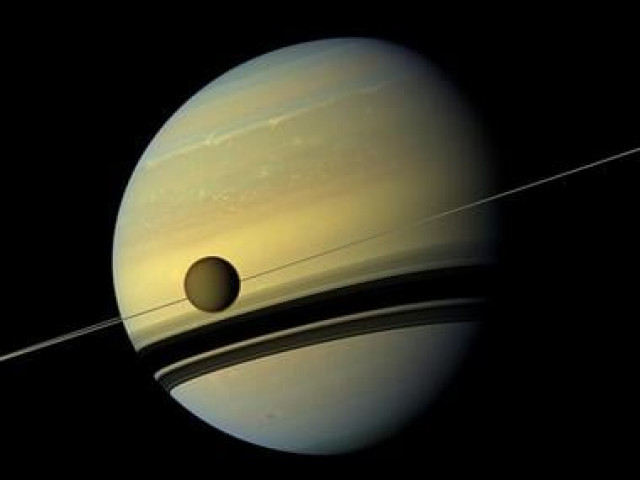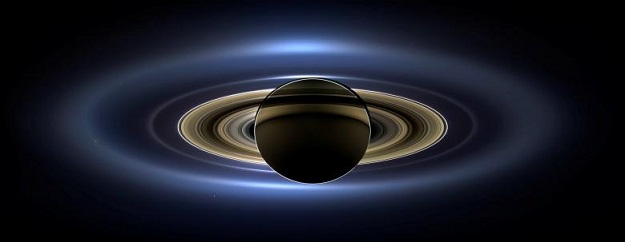
Since arriving at Saturn in July 2004, Cassini has been exploring the giant planet and its entourage of 62 known moons, including enigmatic Titan, believed by scientists to resemble an early Earth, and the ocean-bearing moon Enceladus, which is shooting ice particles out into space.
NASA releases incredible animations of star exploding with energy of 100 million suns
To avoid any chance that hitchhiking Earth microbes still alive on Cassini could contaminate any potential living organisms on Enceladus, NASA plans to crash the spacecraft, which is running out of fuel, into Saturn on September 15.
But before its demise, Cassini has one last mission.
On April 22, Cassini will make a final pass by Titan and use the moon's gravity to slingshot itself into a new orbit that passes inside the 1,930-kilo metre wide gap between the edge of Saturn's atmosphere and its inner-most rings.
 A natural-color image of Saturn from space, the first in which Saturn, its moons and rings, and Earth, Venus and Mars, all are visible, is seen in this NASA handout taken from the Cassini spacecraft July 19, 2013 and released November 12, 2013. PHOTO: REUTERS
A natural-color image of Saturn from space, the first in which Saturn, its moons and rings, and Earth, Venus and Mars, all are visible, is seen in this NASA handout taken from the Cassini spacecraft July 19, 2013 and released November 12, 2013. PHOTO: REUTERSNASA is hoping Cassini will survive long enough for 22 dives inside the rings, revealing details about the their age and composition. But if a ring particle hits Cassini, it could bring the mission to an premature end because the spacecraft will be traveling at more than 70,000 miles per hour [112,654 kph].
"At those speeds, even a tiny particle can do damage," Cassini flight engineer Joan Stupik, with NASA's Jet Propulsion Laboratory in Pasadena, California, told reporters during a news conference on NASA TV.
'Pluto with 110 other objects can be added to solar system again'
Scientists hope to learn if the rings are as old as Saturn itself - roughly 4.6 billion years of age - or if they formed later after a passing comet or moon was shredded by the planet's tremendous gravity.
During the close ring encounters, Cassini also will study Saturn's atmosphere and take measurements to determine the size of the rocky core believed to exist at the center of the gigantic ball of gas that accounts for most of its size.
However long Cassini lasts, "the grand finale will be spectacular," said project scientist Linda Spilker, also with the Jet Propulsion Laboratory.
"We're flying in a region that has never been explored before," she said. "I wouldn't be a bit surprised if some of the discoveries we make with Cassini during the grand finale are the best of the mission."


















COMMENTS
Comments are moderated and generally will be posted if they are on-topic and not abusive.
For more information, please see our Comments FAQ